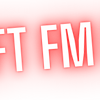Listeners:
Top listeners:
-
 play_arrow
play_arrowElectromusic FM RADIO ONLINE 24/7
-
 play_arrow
play_arrowLondon Calling Podcast Yana Bolder
‘I saw fan-made compilations. It blew my mind’: the music producer who found accidental K-pop fame | K-pop

The Middle-Eastern guitar melody in Blackpink’s How You Like That. The whistle at the very beginning of S-Class by Stray Kids. The sax melodies in Money and Lalisa by Lisa. The crowd chants at the beginning of Seventeen’s Super. Each of these sounds, instantly familiar to fans of K-pop, came not from the Korean genre’s raft of super-producers but from one man, thousands of miles away.
Very few people associate Niles Hollowell-Dhar with K-pop. Currently working under the mononym Kshmr, he first made a name for himself in the mainstream pop world for co-producing the 2010 electro-house banger Like a G6. For the last decade, he has performed as a DJ at festivals including Coachella, Ultra, Sunburn, and Tomorrowland. “I’ve actually never been interviewed about my samples being used in K-pop,” he says warmly, speaking via video call from Croatia, where he is on the lineup to play at the Noa Beach Club. “Let’s do this.”
In recent years, Hollowell-Dhar has become a legend in the music producer community thanks to his sample packs, Sounds of Kshmr. The packs, featuring a range of different sounds, are uploaded on the online music creation platform Splice. These sounds are usually only a few seconds long, and can consist of loops (repeated musical phrases such as a guitar riff) or one-shots (one single sound, like a cymbal). They can also be layered under the main instrumentals to add colour to a song.
All of Kshmr’s sound packs are currently royalty free, which means that artists are not required to pay or credit the maker when a sound is used on a track. Subscribers to Splice can buy a sample pack in a one-off purchase, and use the sounds as many times as they like: generally speaking, Hollowell-Dhar charges a maximum of $99.99 for every sample pack he uploads to the site (the largest of which comprises a whopping 7,000 sounds). To the average person, this may seem a relatively small amount, especially when your work ends up on chart-topping songs.
Hollowell-Dhar sees it differently, however. “It’s like if you made a guitar, and then you sell a million guitars,” he explains. “Now, some of them get used in the newest rock hit single. Do you feel like you should get royalties from the single? You can’t expect that.”
Born in California to an American mother and a Kashmiri Indian father, Hollowell-Dhar first started tinkering with production when he was 11. In the early 2000s, he would put different loops together, record over them and pass CDs around Berkeley high school, where his schoolmates included the rapper G-Eazy and the actor-comedian Andy Samberg. “The music was still quite bad at this point,” he laughs. “I didn’t know how to play a single chord.”
Hollowell-Dhar would invite other students home to record in his makeshift studio. It was also at high school that he wrote a diss track about fellow student David Singer-Vine’s acne. Fortunately no offence was taken, and a shared love of music led to them forming the hip-hop duo the Cataracs in 2003.
after newsletter promotion
They worked steadily, making three albums, but could not break through. That changed in 2010, when the pair featured on Far East Movement’s hit song, Like a G6. The track topped the US charts for three weeks, and now has more than 608m streams on Spotify. It made them an overnight success. “At the time I was producing for whoever I could,” Hollowell-Dhar recalls. “About eight months later, Like a G6 came out and it changed my life for ever.” After Singer-Vine left the Cataracs in 2012, Hollowell-Dhar continued producing for pop acts such as Enrique Iglesias, Robin Thicke and Selena Gomez. Two years later, he shifted to dance music, and began releasing songs as Kshmr.
Around the same time, executives from Splice approached him. The platform started out as a space for producers to collaborate, before growing into the sound marketplace and sample library whose loops have found their way into many mainstream hits, including songs by Lil Nas X and Justin Bieber. “I was just happy to see anybody in the music production space innovating, so I invested a little bit of money into it,” says Hollowell-Dhar, who would become the first artist to release custom sound packs on Splice. Eight years later, those packs have made him one of the biggest behind-the-scenes names in K-pop.
He is aware that his samples are being extensively used. “I couldn’t tell you exactly which ones first caught my attention, but I saw the fan-made compilations of my samples being used in K-pop, and it blew my mind,” he grins. He doesn’t interact very much with the industry itself – the closest he has got to the world of K-pop was with his 2021 release Echo, featuring Indian singer Armaan Malik and K-pop idol Eric Nam. “I’m open to anything, if people educate me enough about the genre,” Hollowell-Dhar says. “Eric has an incredible singing voice, and I’m very proud of that song.”There aren’t any plans to increase his prices: Hollowell-Dhar wants his sounds to be accessible. “I’m always surprised by how little I seem to care and how much other people seem to care,” he says. “How much money do you need, really? I can afford to order pizza or get my dog surgery without having to think twice about it, and I’m happy with that.”
Besides, he is doing very well for himself. His latest venture is a hip-hop album titled Karam, featuring entirely Indian artists. “I don’t try to force my Indian influence on my work as much any more,” says Hollowell-Dhar, whose stage name is a nod to his Kashmiri heritage. “There was a time where I was really intent on getting western dance music fans hooked on to Indian elements, but now I just use it where it makes sense.”
What has stayed constant through a career that has moved from rap to pop to Indian hip-hop is a genuine love of music. It was what led Hollowell-Dhar to walk away from the lucrative pop game years ago: he realised he was thinking more about the science of making a catchy song, rather than about the music itself. “After a while, I couldn’t tell the difference between what I truly liked and what was just successful in bringing in money.”
It is ironic, then, that for someone who does not care about fame in the pop world, Hollowell-Dhar’s samples have connected him to some of its biggest names. For the musician, his samples are a way to make up for not having enough time to dabble in everything he would like. “It’s all an offering to the music gods,” he says serenely. “I can’t make a thousand Kshmr songs a year, but when I put my samples into the world, a thousand little ideas get to blossom.”
Written by: Soft FM Radio Staff
accidental blew compilations Fame fanmade Kpop Mind music Producer
Similar posts
Electro Music Newsletter
Don't miss a beat
Sign up for the latest electronic news and special deals
EMAIL ADDRESS*
By signing up, you understand and agree that your data will be collected and used subject to our Privacy Policy and Terms of Use.
Podcast episodes
Copy rights Soft FM Radio.





